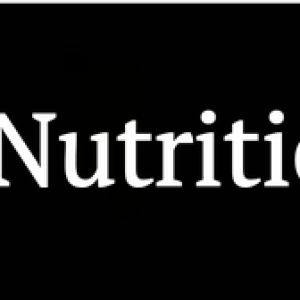Get Ready to Save Lives: Essential First Aid Training TipsPosted by Green Minotaur on November 29th, 2023  Prepare yourself to be a lifesaver with essential first aid training. In emergency situations, knowing how to provide immediate assistance can make a significant difference in saving lives. This article aims to provide valuable tips and insights to help individuals get ready for first aid training. It outlines the types of courses available, highlights their significance, and explains the training process. To read more info regarding cpr: visit the following website. Practical tips for optimal preparation are offered, along with a brief discussion on health topics related to first aid. Types of First Aid CoursesThe types of first aid courses available offer individuals the opportunity to gain essential life-saving skills and qualifications. There are several specific courses that cater to different needs and requirements. The Provide First Aid course, with a duration of 5.5 hours, is the most common workplace first aid course in Australia. It covers the identification of common emergencies and teaches first aid assistance based on ARC guidelines. The Provide Cardiopulmonary Resuscitation (CPR) course, with a duration of 2 hours, focuses on the latest iteration of nationally accredited CPR techniques. It covers recognition and management of unconscious individuals, airway, breathing, compressions, and AED use. Additionally, there is a specific course called Provide First Aid in an Education and Care Setting, also known as Childcare First Aid, which covers first aid emergencies in children, including asthma and anaphylaxis. These courses provide individuals with the necessary knowledge and skills to respond effectively in emergency situations. Specific First Aid Training CoursesContinuing from the previous subtopic, let's delve into the specific first aid training courses available for individuals seeking to acquire essential life-saving skills and qualifications. The most common workplace first aid course in Australia is the Provide First Aid (HLTAID011) course, which is recognized in all states and territories and supersedes HLTAID003. This course covers the identification of common emergencies and teaches first aid assistance based on ARC guidelines. Another important course is the Provide Cardiopulmonary Resuscitation (CPR) (HLTAID009) course, which focuses on the latest iteration of nationally accredited CPR, aligned with ARC guidelines. It covers the recognition and management of unconscious persons, airway, breathing, compressions, and AED use. Additionally, the Provide First Aid In An Education And Care Setting (HLTAID012) course, also known as Childcare First Aid, is approved by ACECQA and benefits workers in education and care settings. This course covers first aid emergencies in children, including asthma and anaphylaxis. First Aid Training ProcessTo begin the discussion on the first aid training process, let's explore the step-by-step approach to acquiring essential life-saving skills and knowledge. The first step involves an introduction to first aid fundamentals, providing a foundation for further learning. Theory-based learning follows, where participants gain theoretical knowledge on various first aid techniques and procedures. This is then reinforced through scenario-based training sessions, allowing individuals to apply their knowledge in simulated emergency situations. The focus is on effective first-aid action steps and the proper use of first aid equipment. To make the most of the training, it is important to come prepared by wearing loose-fitting, casual clothing, embracing each topic fully, being interactive, avoiding contradicting self-taught knowledge, and approaching the training with a positive attitude and willingness to learn. Tips for Preparing for First Aid TrainingPrioritize your preparation for first aid training by following these essential tips. - First, wear loose-fitting, casual clothing to ensure comfort and ease of movement during practical exercises. - Second, take the time to fully embrace each topic and engage in interactive discussions with instructors and fellow participants. - Third, avoid contradicting any self-taught knowledge and approach the training with a positive attitude and willingness to learn new techniques. Remember to ask questions and seek clarification whenever necessary. - Lastly, be open-minded and receptive to different perspectives and approaches to first aid. Health Topics Related to First Aid Building on the previous discussion of preparing for first aid training, it is important to explore the health topics related to first aid that can empower individuals to respond effectively in emergency situations. Two important health topics related to first aid are recognizing frostbite and understanding the importance of heart health. Frostbite is a cold weather injury that can cause serious damage to the skin and underlying tissues. It commonly affects the extremities such as fingers, toes, ears, and nose. Symptoms include numbness, tingling, pale or waxy skin, and blisters. Treatment involves moving to a warm environment and immersing the affected area in warm water. Seeking medical help is important for severe cases or signs of infection. Heart disease is the leading cause of death worldwide. Maintaining a healthy lifestyle, including regular exercise and a balanced diet, can significantly reduce the risk of heart disease. Monitoring blood pressure and cholesterol levels is important, and quitting smoking is one of the most effective ways to prevent heart disease. Vaccination, proper hand hygiene, and antiviral medications are key in preventing and treating the flu. ConclusionIn conclusion, being prepared with essential first aid training is crucial in emergency situations. By enrolling in specific first aid courses and embracing theory-based learning and scenario-based training, individuals can confidently respond to medical emergencies. Practical tips such as wearing appropriate clothing and maintaining a positive attitude also contribute to effective first aid training. Furthermore, understanding health topics related to first aid, such as recognizing frostbite and promoting heart health, enhances the ability to provide immediate assistance. Overall, first aid training equips individuals to be lifesavers in any situation that requires immediate medical assistance. Like it? Share it!More by this author |


